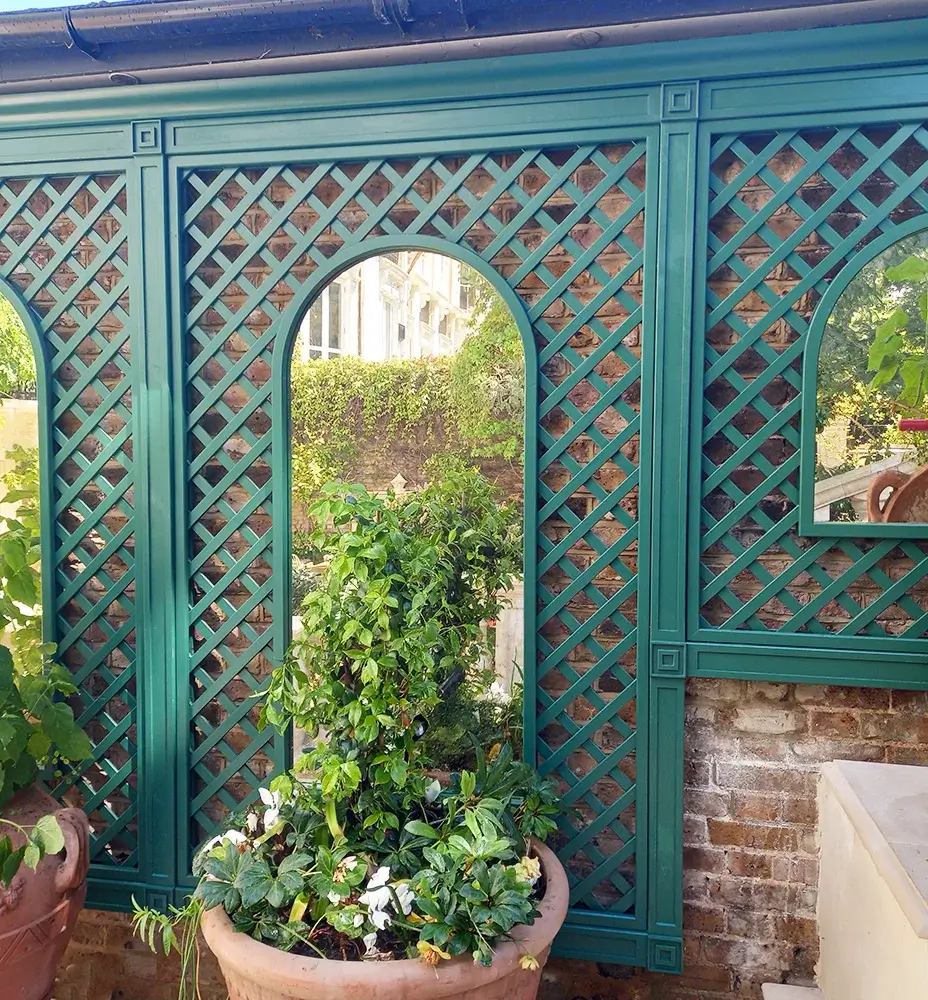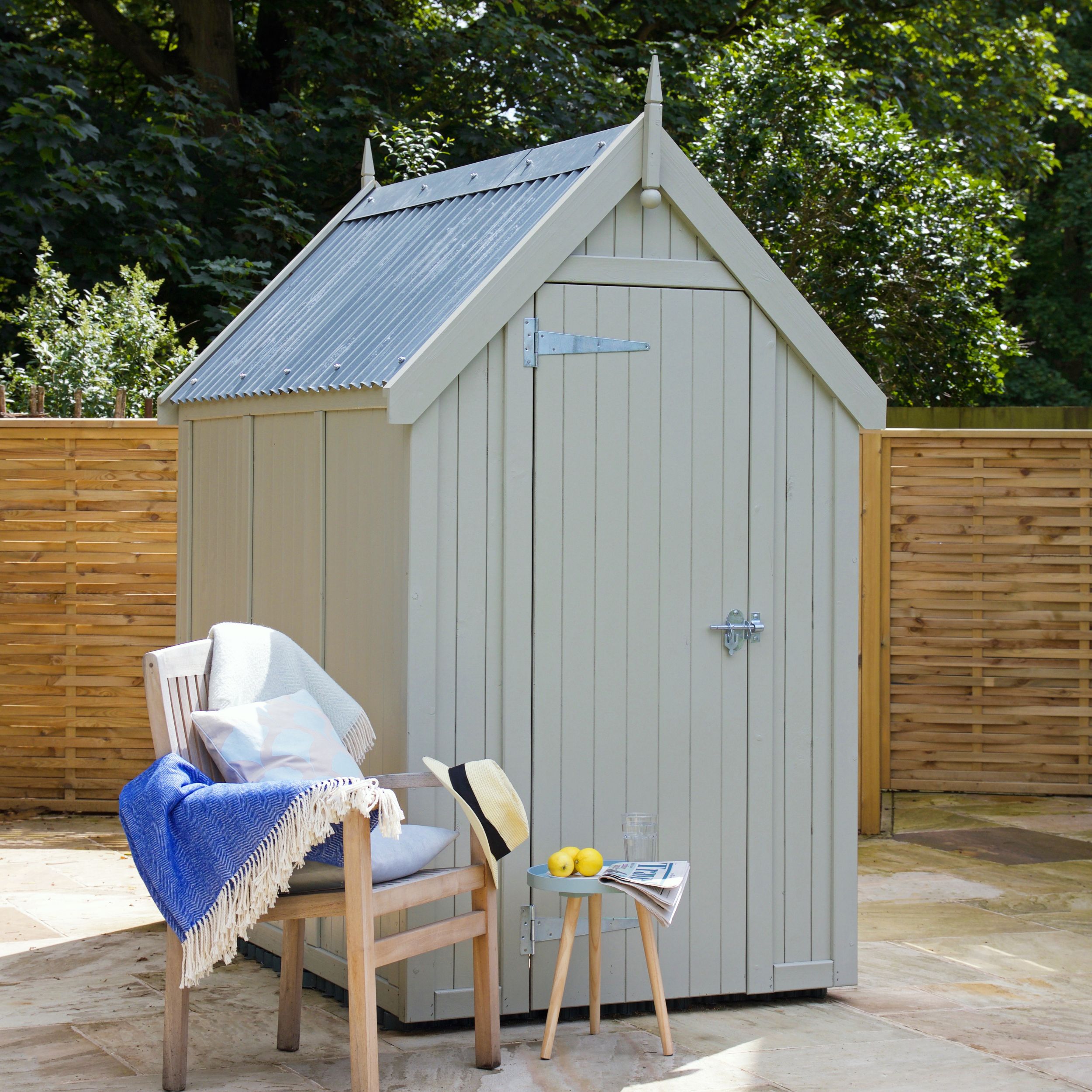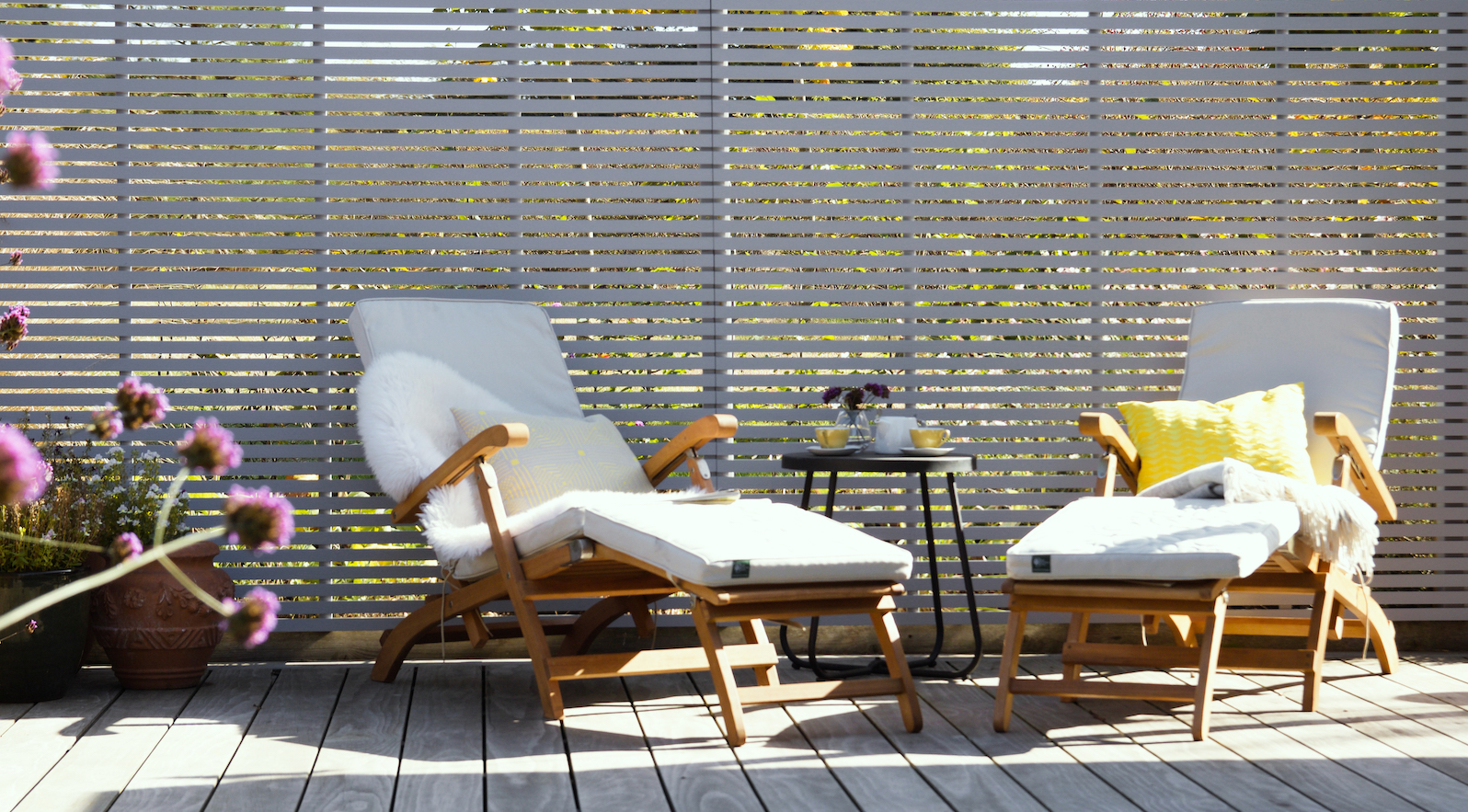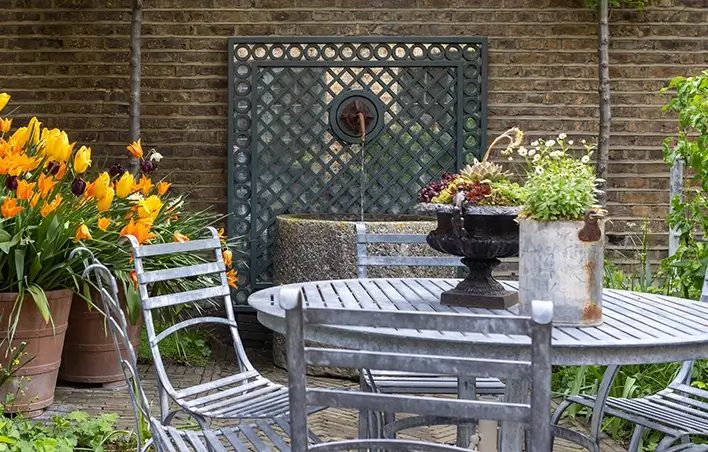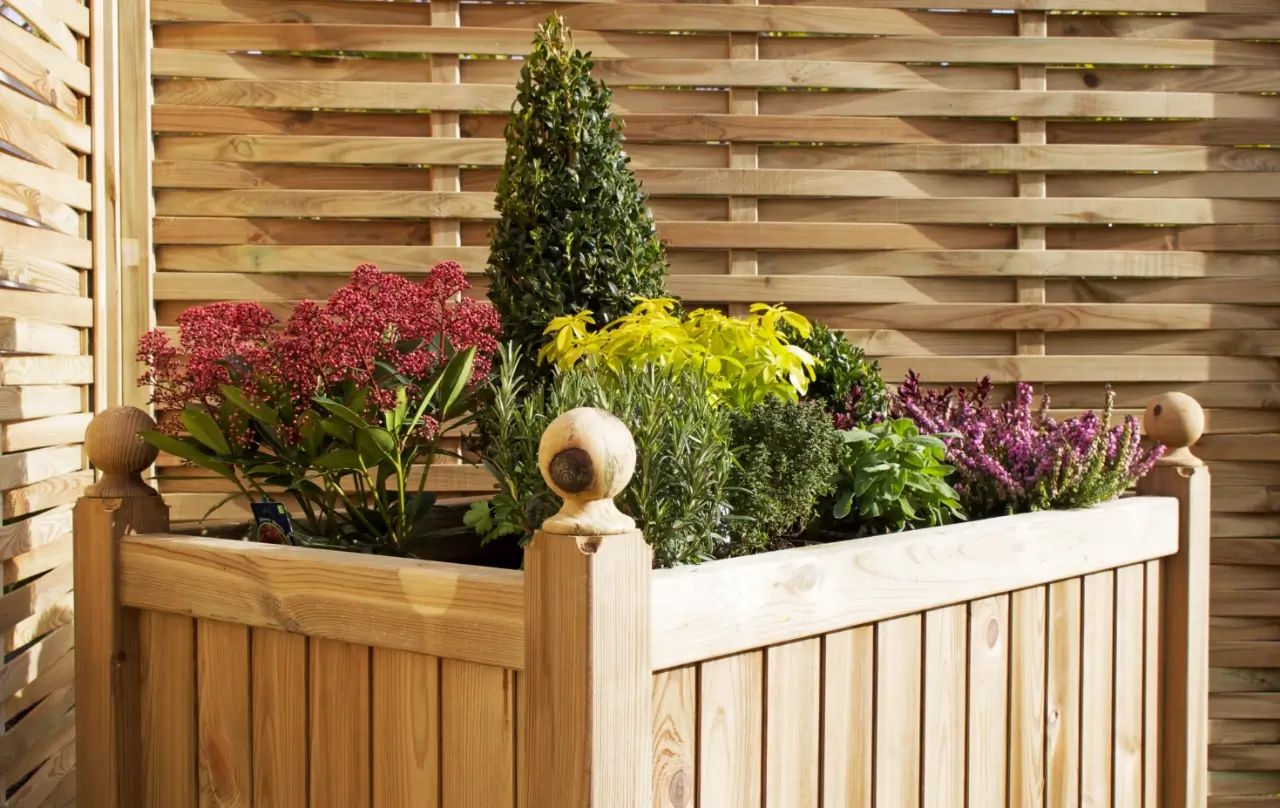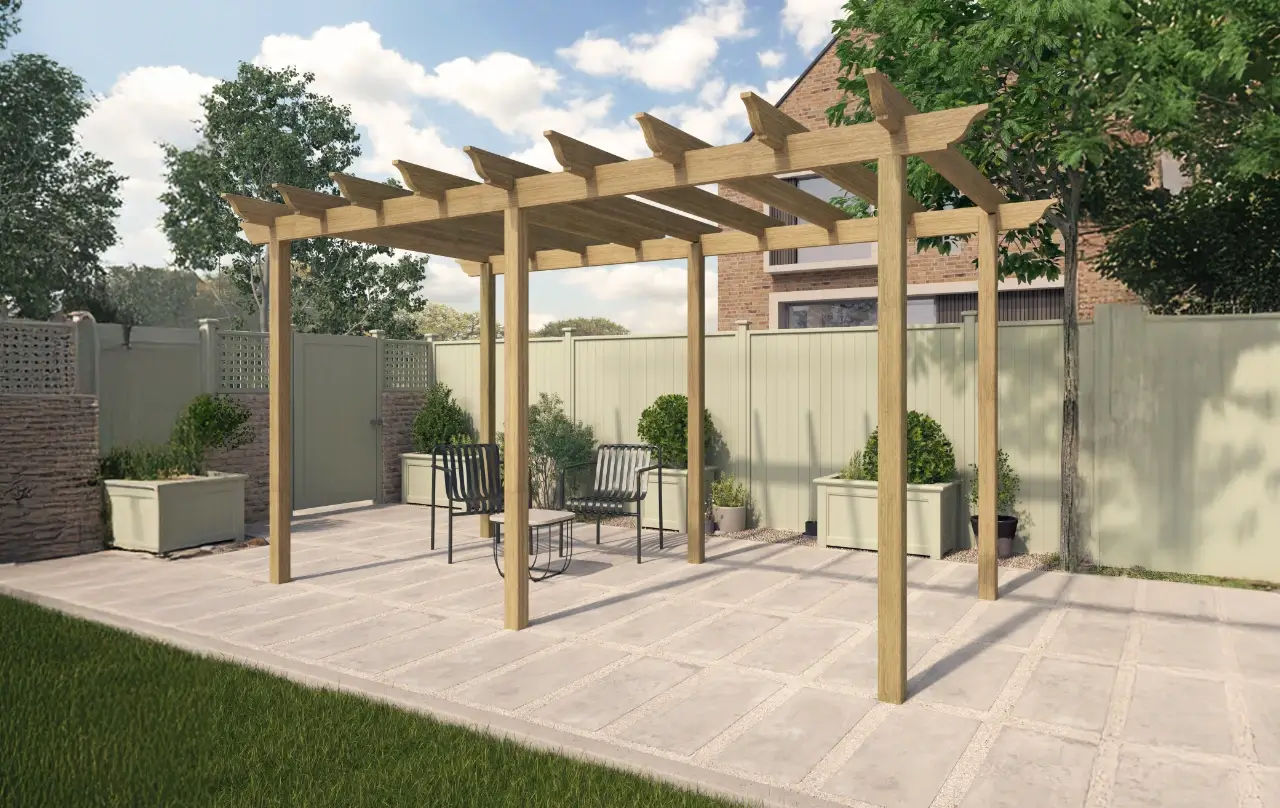Your basket is currently empty!
The Timeless Appeal of the British Cottage Garden

Ah, the British cottage garden! A picture of verdant vibrancy, resplendent with eclectic plantings, delightful charm and, of course, an unmistakable sense of nostalgia. This quintessential feature of the English countryside holds an enduring appeal for garden enthusiasts, horticulturists, and everyday observers alike, and it’s not hard to see why.
Cottage gardens harken back to a simpler, more rustic time. With their informal, homely designs that often include a profusion of traditional English flowers, intertwined with enchanting structural elements, they provide an oasis of calm and beauty amidst the hustle and bustle of modern life. These gardens have a sense of organised chaos, a beautiful mess of colours, fragrances and textures that seduces the senses and soothes the soul.
But beyond the visual spectacle, British cottage gardens tell a tale of resilience, resourcefulness and a deep-rooted connection with nature. They are living illustrations of the UK’s rich gardening history, embodying centuries of horticultural knowledge and skill, passed down through generations of British gardeners.
Whether you’re a seasoned gardener looking to inject some old-world charm into your outdoor space, or a beginner starting your journey with a passion for the rustic appeal of the cottage garden, this article will guide you through the enchanting labyrinth of timeless garden design. From garden trellis to rose arches, from wooden planters to weave panels and picket fencing, we’ll delve into the heart of the British cottage garden, helping you add new and exciting features to your own Eden.
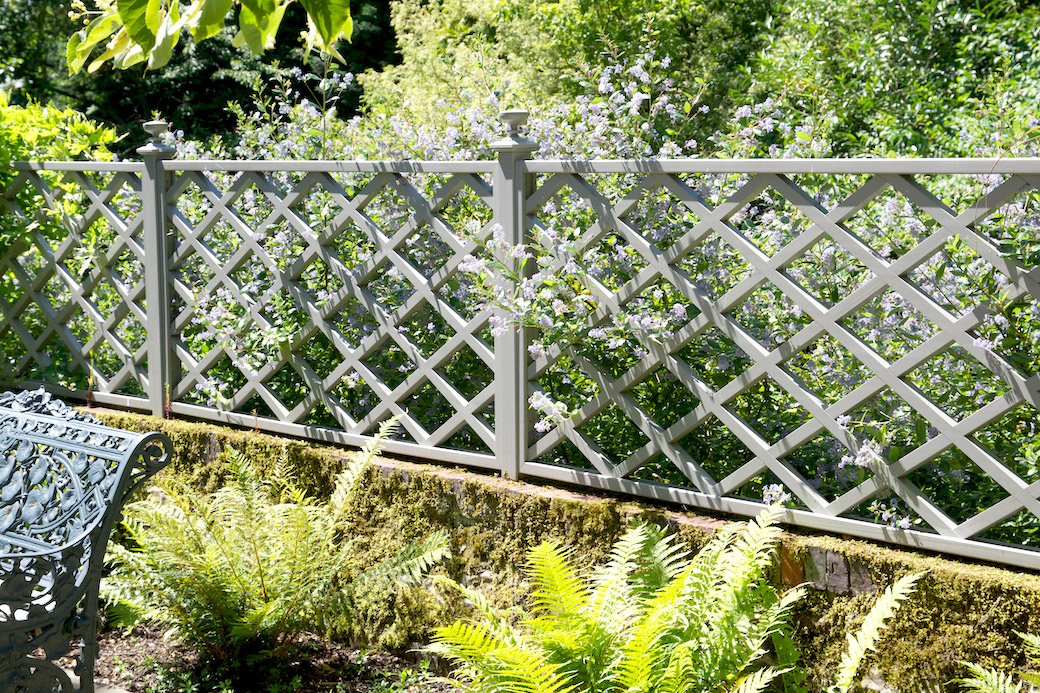
The Charms of the Cottage Garden
Cottage gardens have a unique ability to evoke emotions and create an air of tranquillity and nostalgia. Their overflowing abundance and quintessential English charm can transport us back in time, to a world of verdant meadows and thatched cottages, where life moved at a slower pace. But what exactly makes a garden a ‘cottage garden’?
Informality and Diversity
Cottage gardens embrace informality. They are a joyous celebration of diversity, an orchestrated symphony of colour, texture, and shape that offers a visual and sensory feast. In a cottage garden, plants are allowed to grow freely, fostering a sense of abundance and natural beauty.
Traditional Plants
Cottage gardens are known for their mix of ornamental and edible plants. Traditional favourites include roses, lavender, foxgloves, hollyhocks, and a variety of herbs and vegetables. These are often interspersed with fruit trees, providing both beauty and practicality.
Structural Elements
Integral to the cottage garden’s charm are its structural elements – pieces that provide form and character. Garden trellis is an iconic feature, providing support for climbing plants and adding vertical interest. Wooden planters add depth and allow for controlled planting, while rose arches and arbours create enchanting walkthroughs. Weave panels and picket fencing define the garden’s boundaries, lending a sense of cosiness and security.
Now that we’ve established what characterises a cottage garden, let’s delve deeper into these elements, and explore how you can incorporate them into your own garden.
The Versatility of Garden Trellis
Garden trellises are an essential element of cottage garden design, providing support for climbing plants and adding an element of height and interest. They can be both functional and decorative, blending seamlessly with the overall aesthetic of the garden.
Choosing the Right Trellis
Purchasing the perfect trellis begins with considering the plants it will support. For heavy climbers such as roses, a sturdy, well-constructed trellis from a trusted supplier like Garden Trellis is essential. For lighter plants like sweet peas or clematis, a more delicate, decorative design may suffice.
Incorporating Trellis into Your Garden
Trellises can be used in a variety of ways in a cottage garden. They can provide privacy, define garden spaces, or act as a backdrop to flower beds. A trellis can also be used to create a ‘living wall’, adding greenery and life to bare areas.
Maintenance
A good quality trellis should last for many years, but occasional maintenance may be necessary. Ensure that the wood is treated to withstand the UK’s often unpredictable weather, and consider applying a fresh coat of paint or stain every few years to keep it looking its best.
Plants for Your Trellis
A cottage garden trellis is the perfect backdrop for traditional climbers like roses, honeysuckle, and clematis. For a classic look, consider a combination of roses and clematis, which bloom at different times, ensuring a colourful display for much of the year.
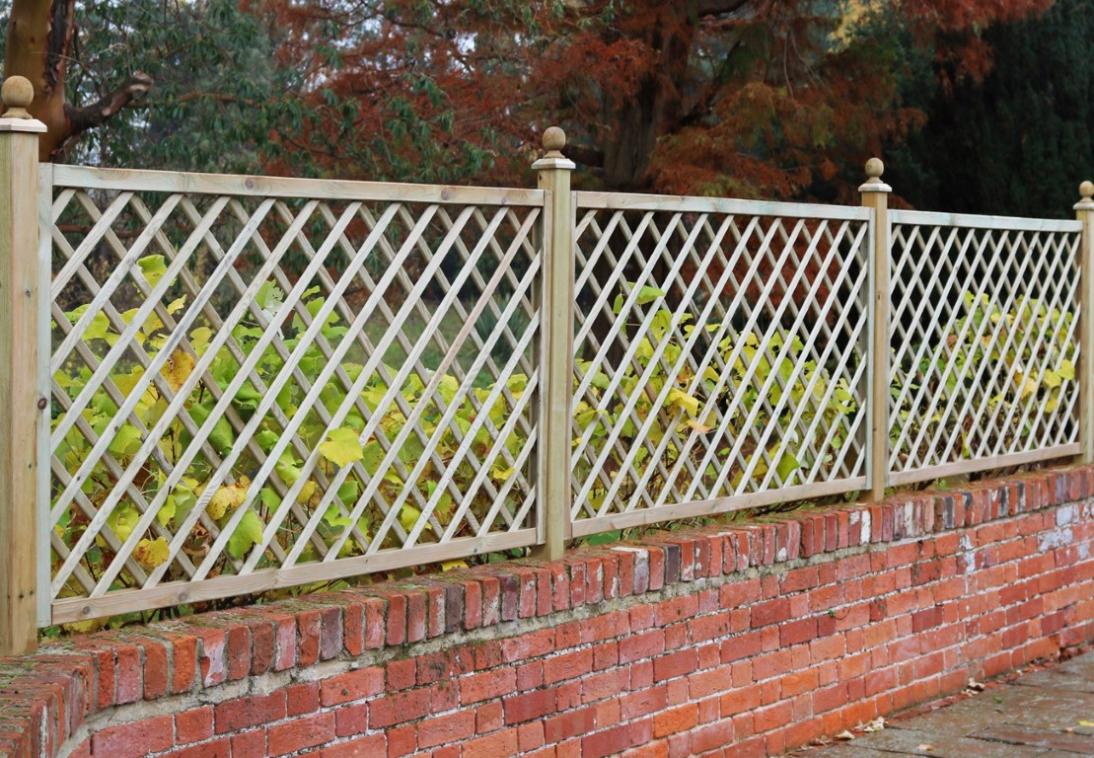
Wooden Planters: A Practical and Aesthetic Solution
Incorporating wooden planters into a British cottage garden can create a focal point, add structure, and make gardening easier and more accessible.
Choosing the Right Planter
The type of planter you choose can greatly impact your garden’s appearance. From rustic, chunky designs to sleek, modern lines, Garden Trellis offers a variety of options to suit your needs. When selecting a planter, consider factors such as the size, wood type, and the kind of plants you intend to grow.
Placement of Planters
Strategic placement of wooden planters can accentuate the key areas of your garden, add height variation, or delineate different zones. They can also be used to cultivate plants that might not thrive in your soil type, as you can fill them with the ideal compost for each plant species.
Planting in Your Planter
The beauty of planters is that they can accommodate a wide variety of plants. A classic cottage garden might include lavender, geraniums, or roses in its planters. For a modern twist, consider incorporating ornamental grasses or exotic plants.
Maintenance and Care
Wooden planters require minimal maintenance, especially when made from durable and weather-resistant wood. Regular watering, annual top-ups of compost, and a watchful eye for pests will ensure your plants remain healthy and vibrant.
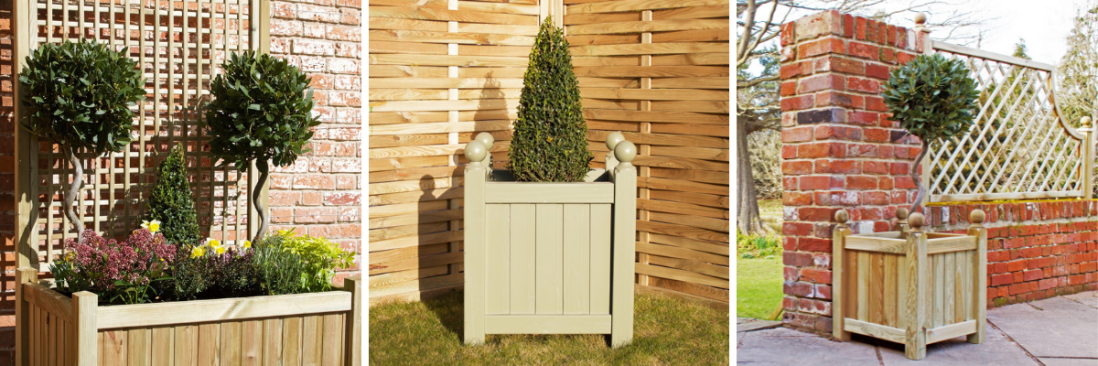
The Romantic Allure of Rose Arches
Rose arches are one of the most enchanting features of a British cottage garden. They provide a stunning focal point, add height and structure, and offer a sensory delight when adorned with fragrant roses.
Choosing the Right Rose Arch
There’s a range of arch styles available at Garden Trellis to complement your garden design. From simple, rustic arches to intricate, ornate designs, there’s something to suit every taste. Consider the space available and the size and type of the roses (or other climbers) you want to grow.
Placement of Rose Arches
Rose arches can create a charming entrance to the garden or a pathway, guide visitors through different garden ‘rooms’, or simply act as a standalone feature. Consider where it will have the most visual impact and ensure it’s positioned to benefit from the appropriate sunlight conditions.
Planting and Training Roses
Choose rose varieties that are suited to arch growth, like climbers and ramblers. Plant your roses, taking care to ensure they have ample room to grow, and train them to cover the arch by gently tying their stems to the structure as they grow.
Maintenance and Care
Regular pruning will ensure your roses remain healthy and vibrant, while keeping them in check to maintain the arch shape. Depending on the rose variety, you may need to provide additional feed and protection from pests and diseases.
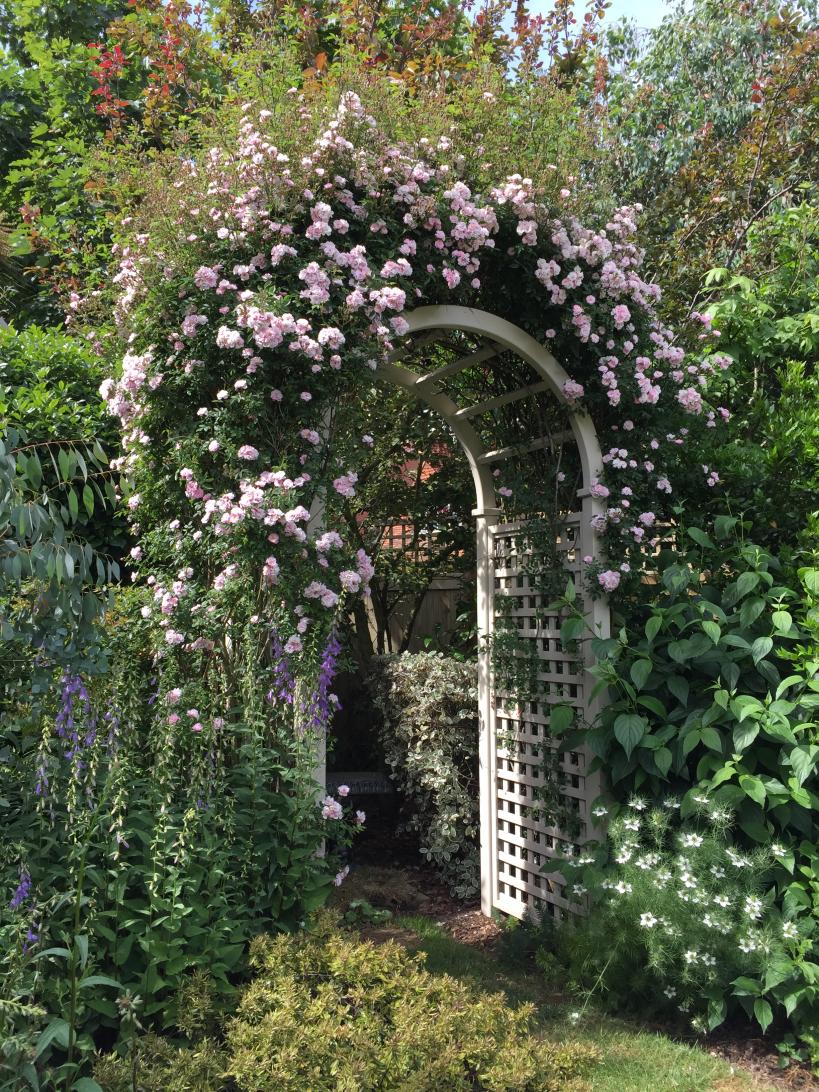
Weave Panels: A Classic and Versatile Choice
Weave panels are a popular feature in British cottage gardens, thanks to their versatility and aesthetic appeal. They can add texture, depth, and a sense of enclosure to your garden, whilst also offering a supportive structure for climbing plants.
Selecting the Perfect Weave Panels
At Garden Trellis, you can find weave panels in various designs, sizes, and finishes. They can be diamond or square patterned, with each style providing a different look and level of privacy. Consider your garden’s overall design and purpose when selecting your weave panels.
Incorporating Weave Panels
Weave panels can be used in various ways in a garden. They can divide different areas of your garden, provide a backdrop for your plants, or be used as a decorative feature on their own.
Supporting Plants with Weave Panels
Weave panels make excellent support for climbing plants. You can create a living wall by growing plants such as clematis, honeysuckle, or even climbing roses. This not only looks stunning, but also adds to the garden’s biodiversity, attracting beneficial insects and birds.
Maintenance and Care
The weave panels need to be treated periodically to prevent weathering and to maintain their appearance. Depending on the plants you have growing on them, you may also need to do some light pruning and training.
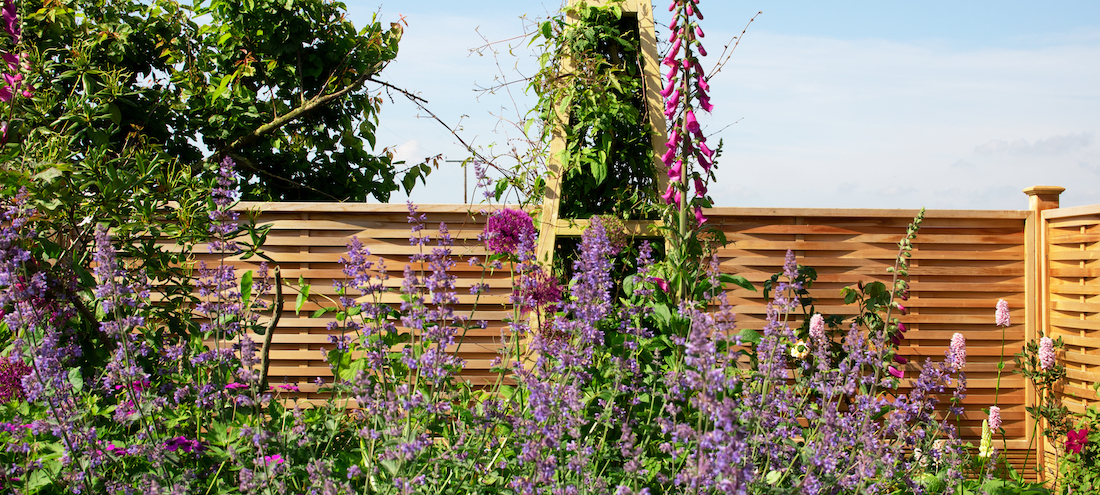
The Charm of Picket Fencing
Finally, we arrive at one of the most iconic features of a traditional British cottage garden: the picket fence. These fences, usually painted white, define the garden’s boundaries, add charm and character, and contribute to the overall cozy feel that is typical of the cottage garden.
Choosing the Right Picket Fencing
Your choice of picket fencing can set the tone for your entire garden. At Garden Trellis, you’ll find various designs and heights to suit your needs. Whether you prefer the classic rounded top, pointed top, or flat top design, there’s something to fit every garden style.
Installation Tips
Proper installation of picket fencing is crucial. Always make sure your posts are deeply embedded and secure, and that your panels are level. If you’re installing it yourself, don’t hesitate to seek advice, or we offer an installation service if required.
Decorating Your Picket Fence
There are numerous ways to decorate your picket fence to increase its appeal. Hanging pots, birdhouses, and fairy lights are just a few options. Climbing plants such as roses, clematis, and honeysuckle can also be trained along the fence, adding a natural, lush element to the border of your garden.
Maintenance and Upkeep
Picket fencing requires regular maintenance to keep it looking its best. This may include painting or staining every few years, and checking for any damage or rot, particularly after harsh weather conditions.
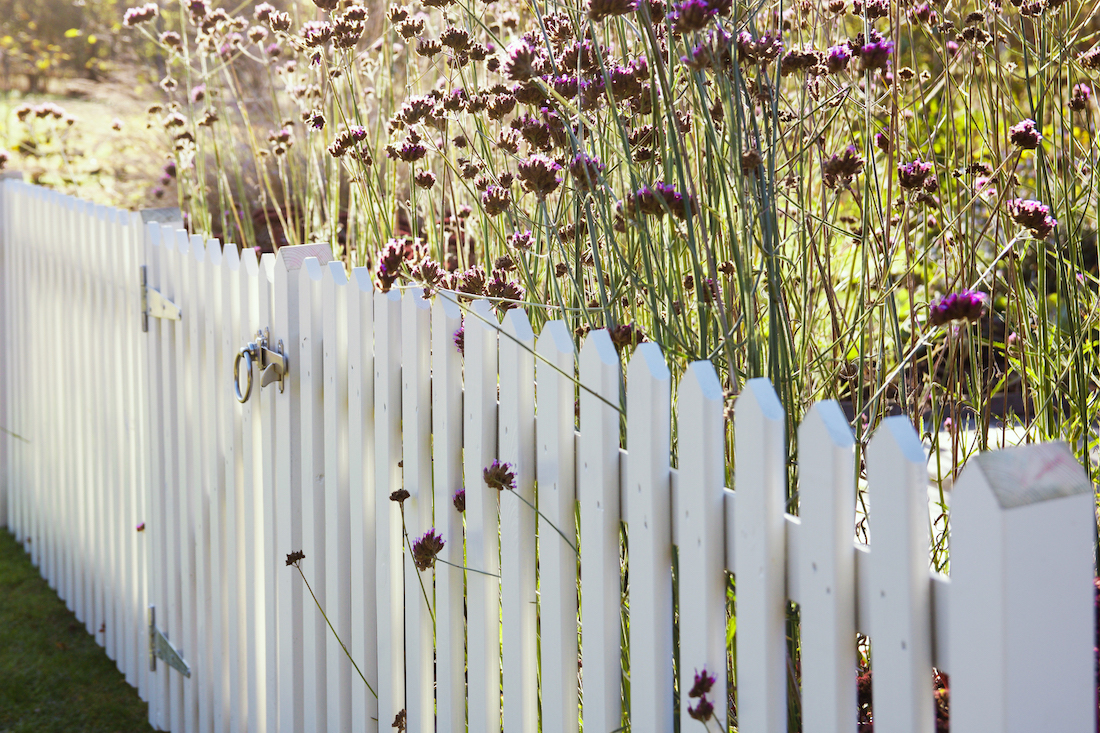
The British cottage garden is a charming and timeless classic, adored by many for its sense of nostalgia, romantic appeal, and stunning visual array of colourful, fragrant plants.
The timeless appeal of the British cottage garden lies in its eclectic mix of elements. The blending of function and form, practicality and beauty, and the mingling of kitchen and ornamental plants all contribute to the allure of these gardens. It’s an aesthetic born of necessity, yet refined by a love of nature, beauty, and creativity, which continues to captivate gardeners to this day.
We hope you are inspired to incorporate these features into your own garden. Browse the online shop here >
Looking for the perfect fit? You might need our bespoke service. Find out more about custom joinery >
